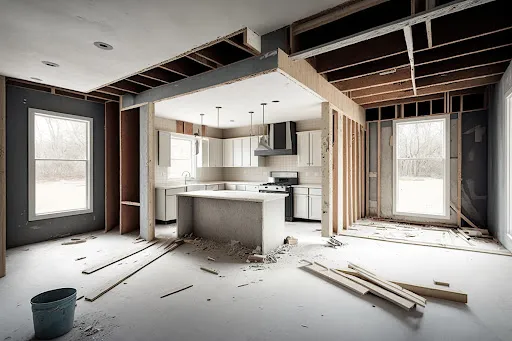Remodeling is more than a renovation; it’s a rejuvenation of living spaces, a chance to infuse new life into your home, and a testament to the craftsmanship of remodelers. Whether you dream of a modern kitchen, a luxurious bathroom, or an expanded living area, the world of remodeling holds boundless possibilities. In this article, we’ll delve into the intricate art and skill of remodeling, the pivotal role of remodelers, and the transformative impact these projects have on homes and lifestyles.
Table of Contents
The Essence of Remodeling
Remodeling is an artful fusion of creativity and technical expertise, aimed at enhancing the functionality, aesthetics, and value of a property. It encompasses a spectrum of projects, including:
- Kitchen Remodeling: Modernizing kitchens for improved efficiency and style.
- Bathroom Renovations: Creating luxurious spa-like retreats or updating outdated spaces.
- Basement Transformations: Converting unused basements into functional living areas.
- Room Additions: Expanding living spaces to accommodate growing families or changing needs.
- Whole-House Renovations: Comprehensive renovations that transform the entire home.
- Exterior Makeovers: Enhancing curb appeal through exterior renovations.
The Craftsmanship of Remodelers
At the heart of every successful remodeling project is a skilled remodeler. These professionals are the architects of transformation, guiding projects from conception to completion. Their roles encompass:
- Design Expertise: Collaborating with clients to conceptualize and design spaces that align with their vision and needs.
- Project Management: Orchestrating every facet of the project, from scheduling to procurement of materials and subcontractor coordination.
- Technical Mastery: Ensuring that structural and technical aspects are addressed, including electrical, plumbing, and HVAC systems.
- Attention to Detail: The hallmark of skilled remodelers, who bring precision and craftsmanship to every element of a project.
- Budget Management: Adhering to budgetary constraints while delivering a quality result.
The Remodeling Process
A successful remodeling project follows a structured process:
- Consultation: Clients meet with remodelers to discuss ideas, goals, and budget.
- Design Phase: Collaborative design and planning to bring the vision to life.
- Permitting: Obtaining necessary permits to ensure compliance with building codes.
- Demolition: Removing old fixtures, walls, or structures to make way for the new.
- Construction: Actual remodeling work, including framing, electrical, plumbing, and finishing.
- Inspections: Necessary inspections to ensure safety and compliance.
- Finishing Touches: Installation of fixtures, fittings, and finishes to complete the project.
- Final Walkthrough: A thorough inspection with clients to ensure satisfaction.
The Transformative Impact
The impact of remodeling extends far beyond aesthetics:
- Enhanced Comfort: Updated spaces are more comfortable and functional, tailored to the needs of the occupants.
- Increased Property Value: Remodeling projects often yield a return on investment by increasing the value of the property.
- Energy Efficiency: Modern remodeling projects often incorporate energy-efficient features, reducing utility costs.
- Personalization: Clients can infuse their unique style and personality into their living spaces.
- Better Use of Space: Remodeling can optimize existing spaces, making them more practical and efficient.
Challenges and Considerations
While remodeling is a rewarding endeavor, it does come with challenges:
- Budgeting: It’s crucial to establish a realistic budget and contingency fund to account for unexpected costs.
- Timelines: Delays can occur due to unforeseen issues, so it’s essential to plan accordingly.
- Design Changes: Frequent design changes can disrupt the project’s flow and budget.
- Permits and Regulations: Compliance with local building codes and permits is essential.
- Communication: Clear and open communication with remodelers is vital to ensure that the project aligns with your vision.





